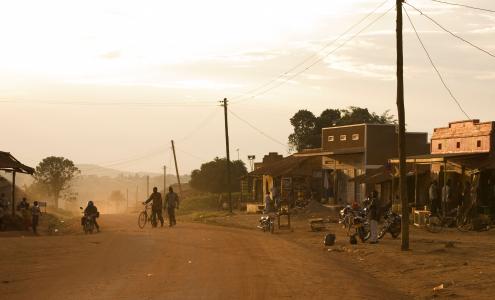
Project Details
Energy systems planning for SDGs
National energy planning and policy support for the achievement of Sustainable Development Goals
Background, challenges and context
The UN 2030 Agenda for Sustainable Development, the African Union’s Agenda 2063 and the Common African Position on the post-2015 Development Agenda all highlighted that energy planning is central to the optimisation of investments in energy production and infrastructure.
Yet within Sub-Saharan Africa and South Asia, energy planning is constrained by insufficient human and institutional capacity to effectively use models and decision supporting tools for energy planning and management. These constraints are further exacerbated by a lack of dedicated institutions for long-term capacity and skills development. Furthermore, existing electrification, energy and integrated assessment models often lack the data that are critical for informing policy analysis in low-income countries, in part because they are often closed-source, expensive or difficult to adapt.
Research overview and objectives
To help address these capacity and data gaps, EEG is supporting a project on National energy planning and policy support for the achievement of Sustainable Development Goals, led by the KTH Royal Institute of Technology.
This project will promote the use of quantitative analysis through free, transparent and robust energy modelling to directly inform energy policy in Ethiopia, Uganda and Sierra Leone. The project will draw on the planning tools developed by the OpTIMUS Community of Practice, including the Open-Source Electrification Toolkit (OnSSET), the Open-Source energy Modelling System (OSeMOSYS), and the integrated Climate, Land-use, Energy, Water strategies (CLEWs/OSiMOSYS) framework.
Capacity building is a core element of the project. Open-source modelling tools will be taught to individuals from identified institutions in the target countries to develop local capacity in energy planning and policy making. KTH will aim to support the development of three energy planning centres of excellence by working closely with its partners:
-
University of Addis Ababa and the Ministry of Water, Irrigation and Electricity in Ethiopia
-
Ministry of Energy in Sierra Leone
-
Makarere University and the Ministry of Energy and Mineral Development in Uganda
In these countries, KTH will help build the components of an energy planning ‘ecosystem’ by providing starter datasets and tools, online teaching material and training events.
While the project focuses on targeted institutions and the demands of Ethiopia, Sierra Leone and Uganda, the research and development advances will be generally applicable, and the teaching material will be made available online and via regional training hubs.
Much of the training material will not be country-specific, so can be used elsewhere in energy planning programmes and capacity development projects. For example, it will be adopted by the UN’s Modelling Tools for Sustainable Development project, as well as being regularly used at the Global Summer School of the same name and the annual Energy Modelling Platform for Africa (EMP-A).
Local partners
Ethiopia: University of Addis Ababa and Ministry of Water, Irrigation and Electricity
Sierra Leone: Ministry of Energy
Uganda: Makerere University and Ministry of Energy


